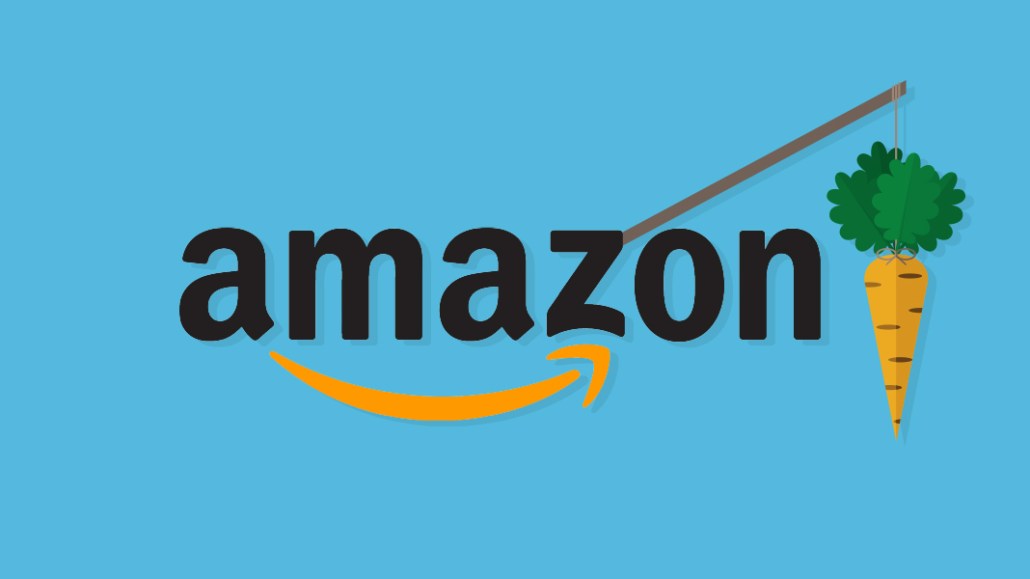Retail Briefing: Retailers are trying to loosen Amazon’s grip on affiliate revenue

As customer acquisition costs through Facebook and Google rise, retailers are turning to publishers for help.
Affiliate partnerships with publishers is becoming an increasingly appealing solution for retailers to drive traffic to their sites with editor endorsements, while riding the coattails of media companies’ SEO rankings. They’re hiring companies like Narrativ and VigLink to get the traffic from products they carry when they’re linked by publishers, using technology that optimizes for the best price and ensures that shoppers don’t arrive at dead links or expired product pages. According to one technology partner manager, one retailer saw commission on clicks increase from 3 to 14 percent after focusing in on affiliate revenue as a customer acquisition tool.
It’s a game Amazon’s already been playing, and winning. Publishers often favor Amazon links (BuzzFeed dedicates entire listicles to the retailer) because it reliably drives readers to live product pages, shares data with content creators around what performs and pays publishers a better commission rate than competitors – 20 percent per click versus a 5 percent average, according to Narrativ.
As other multi-brand retailers wake up to the revenue and traffic potential that affiliate links unlock, they’re hoping to loosen Amazon’s grip on the market.
“Amazon’s continued and increasing dominance is causing almost all retailers to scramble and try to win as much competitive traffic from content publishers as possible,” said an exec at a technology vendor that works with retailers on affiliate marketing. “To fight Amazon, retailers are using publishers as a means to improve their e-commerce share.”
Affiliate advertising, worth $7 billion, is a tiny industry compared to search advertising, worth $95 billion. But affiliate links are much easier to scale while maintaining cost. Amazon patented its affiliate linking technology at the same time that it patented its one-click checkout, and those affiliate links now drive about 650 million visitors to Amazon per month.
“Publishers are looking for revenue outside of traditional advertising, and affiliate links act like windows to retailers that are competing for traffic online,” said Shirley Chen, founder and CEO of Narrativ. “Retailers have invested so much into partners like Facebook to retarget customers while taking no active role in affiliate linking. Amazon’s gone unchecked in owning this area, but I think we’ll see that start to change.”
Overheard
“The traditional agency model feels like a generic service, not a partnership. No brand is looking for that today.”
–Deanne Bedoya, senior director of brand marketing and creative services, Lucky Brand
What we’ve covered
For some customers, free coffee is worth giving up some personal data. The Japanese coffee chain Shiru Cafe, which has 21 stores located mostly in Japan and India, launched its first U.S. location in Providence, Rhode Island, at the Brown University campus earlier this year. To access free coffee, customers have to be students or faculty members who provide personal data including their names, dates of birth and work experience through an online registration process. The company is now planning to expand to more U.S. locations by end of the year.
Amazon wants to leave marketers without doubt that its ads are better than those of its rivals at driving sales on its sites. The retailer is testing its Amazon Attribution tool, which lets advertisers compare whether ads on its sites are more effective than those on its rivals. Only those advertisers that sell on Amazon, rather than through it, are being invited to the free trial. Competition for search rankings on Amazon is getting harder as more advertisers compete, forcing some to look elsewhere for traffic.
Emerging designers, particularly those who have built up social media followings, are now seen as keys that can unlock a new customer for the retailers that carry them. Online retailers like Net-a-Porter, MatchesFashion, Moda Operandi and the e-commerce sites of luxury department stores are competing on newness, exclusivity and an ability to discover the next big names in fashion to give customers a reason to shop there and to keep coming back.
As fashion companies, including Gucci, DVF and Milly, pull back on wholesale channels in favor of working more directly with consumers, department stores are strategizing to give them what they want — often, an opportunity to tell consumers who they are and why they’re worth shopping. An increasingly common fix is the promise of a sales staff well-trained on the brand’s product and backstory.
By the numbers
Forrester released its 2018 retail forecast last week. Here are the numbers to know.
- $3.7 trillion – total retail sales
- $1.4 trillion – retail sales influenced by digital
- $507 billion – online retail sales
- $118 billion – mobile retail sales, 23 percent of total online retail sales
Subscribe to get the Digiday Retail Briefing in your inbox each week – packed with news, analysis and research covering the modernization of retail and e-commerce.
More in Marketing

Zero-click search is changing how small brands show up online — and spend
To appease the AI powers that be, brands are prioritizing things like blogs, brand content and landing pages.

More creators, less money: Creator economy expansion leaves mid-tier creators behind
As brands get pickier and budgets tighten, mid-tier creators are finding fewer deals in the booming influencer economy.

‘Still not a top tier ad platform’: Advertisers on Linda Yaccarino’s departure as CEO of X
Linda Yaccarino — the CEO who was never really in charge.








